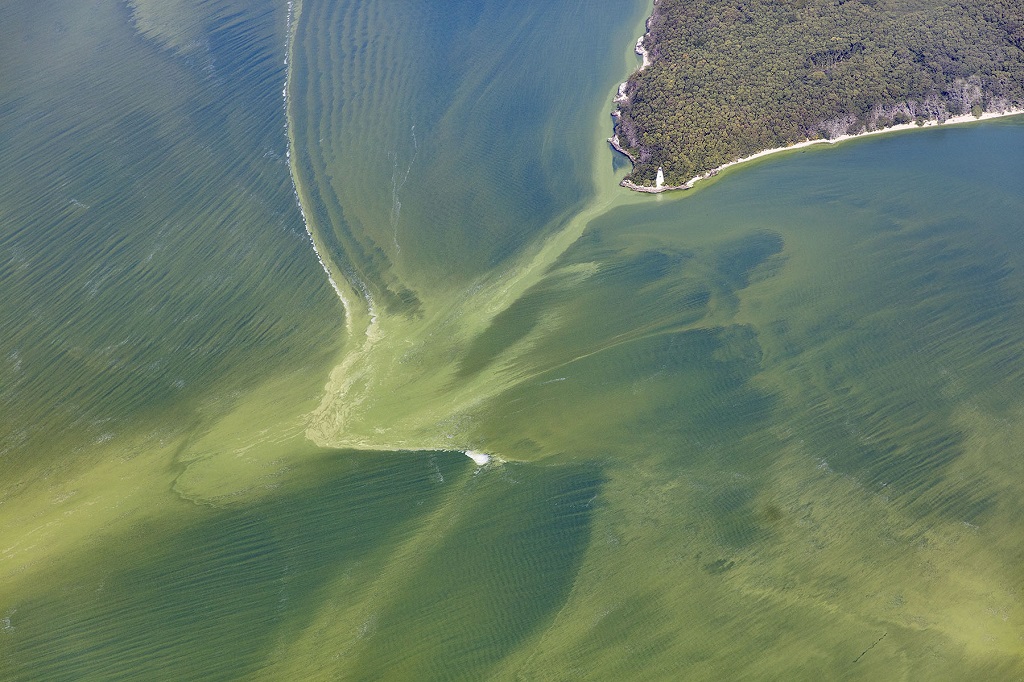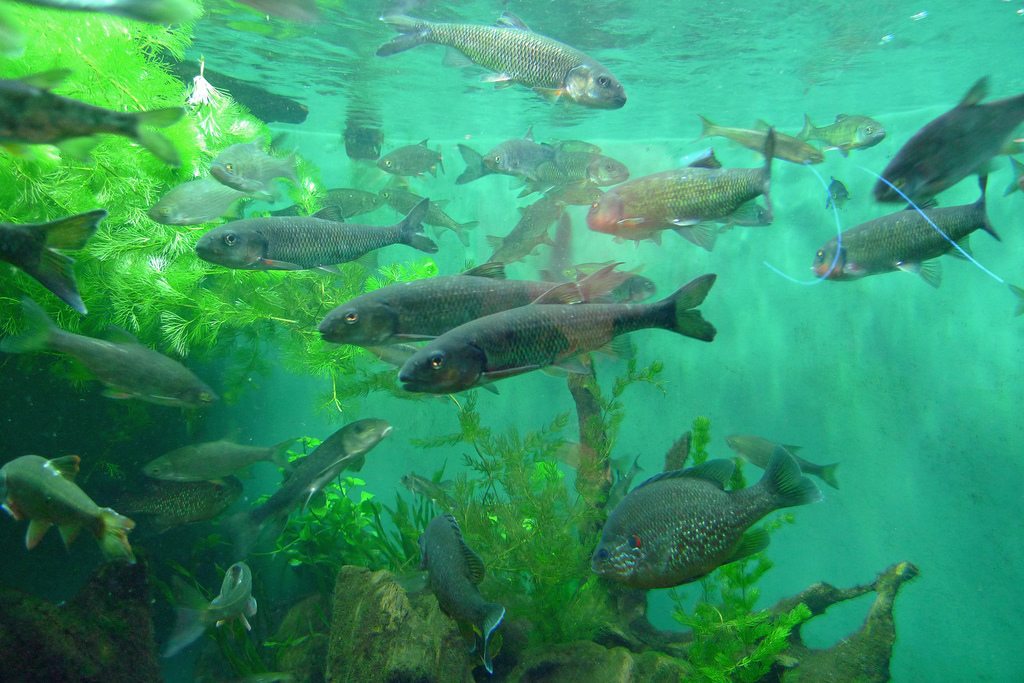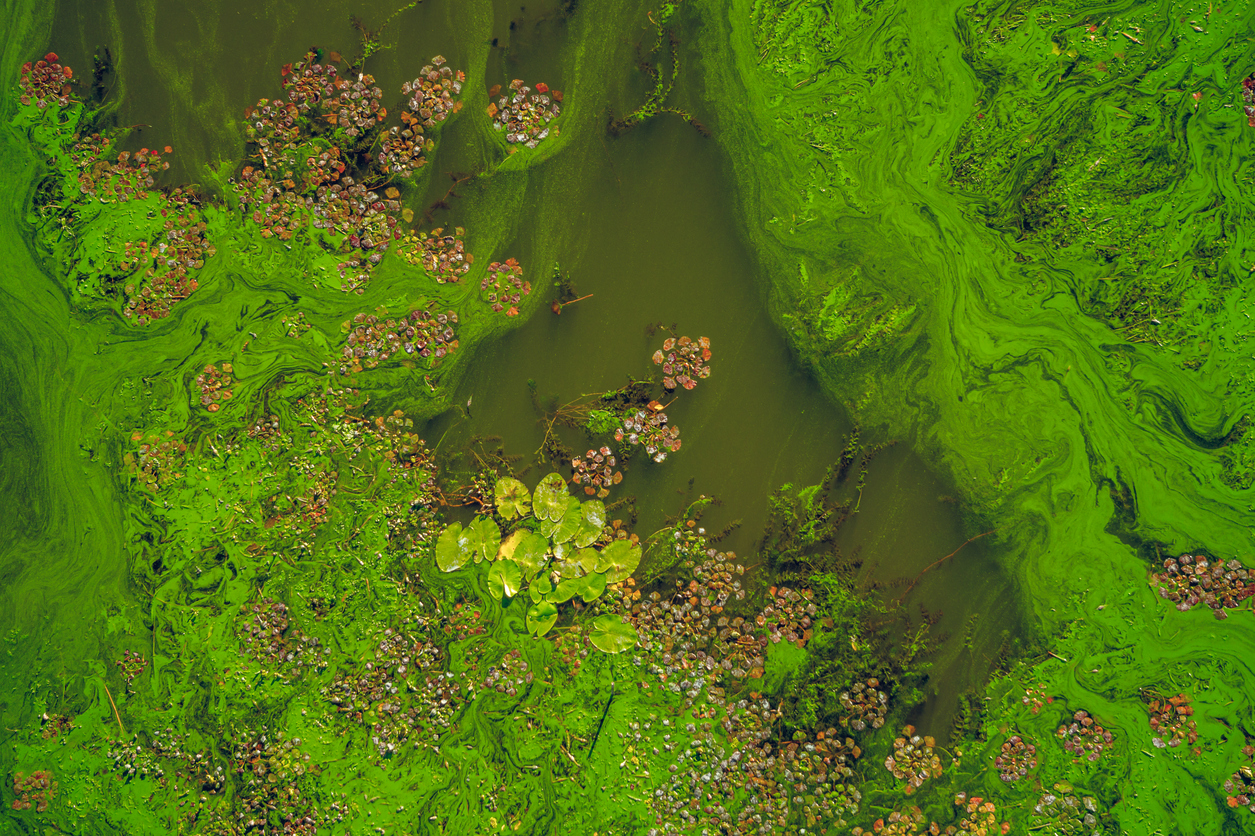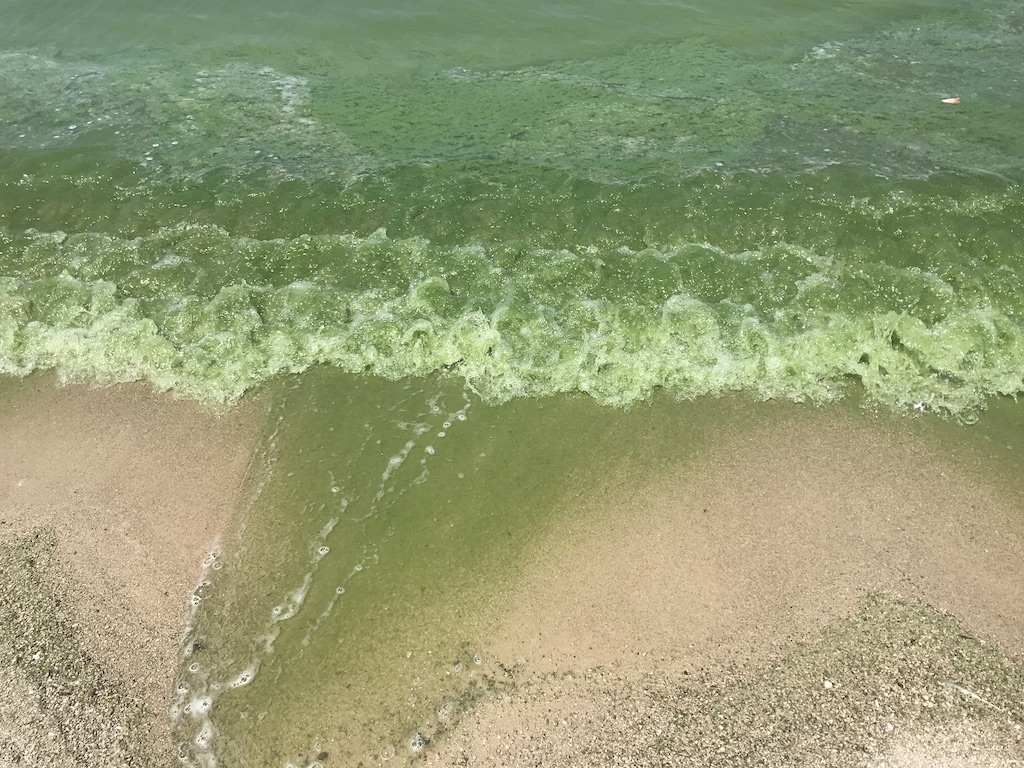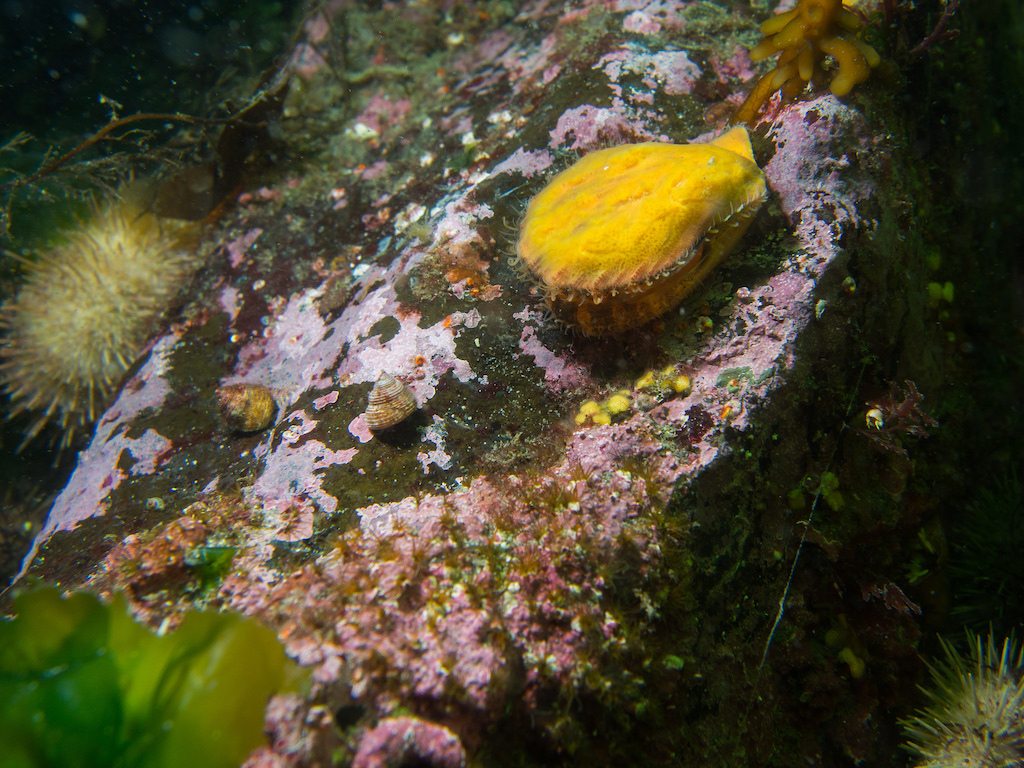In Mississippi, a bluish-green algal bloom has closed all the beaches.
The timing couldn’t be much worse. It was a holiday weekend, and local business owners on the Gulf of Mexico were counting on revenue from tourists. Instead, the algae arrived. It killed the oysters in at least one harvesting region. Then it shut down one beach after another, as it can cause rashes, stomach cramps, nausea, and diarrhea for swimmers.
This particular outbreak can be traced back at least in part to the flooding that inundated the Midwest earlier this year, The New York Times explains. Floodwaters flushed into the Mississippi River, which rose high enough that the Army Corps of Engineers opened a spillway that empties into Lake Pontchartrain, which is connected to the Gulf of Mexico. The resulting flow of water and nutrients feeds the algae, which in turn sucks oxygen out of the water and stresses fish and crabs.
The farm runoff creates all sorts of problems along the river: It can taint well water, which in turn may cause dangerous blood conditions in babies and cancer. When it all winds up in the gulf it culminates in a “dead zone,” a low-oxygen swath of water where fish can’t survive. The dead zone is forecasted to reach the size of Massachusetts this year. And this weekend the algae began impacting tourism as well.
The Mississippi isn’t the only body of water affected by farm-related, toxic algal blooms. Last year, we reported that the number of blooms had tripled from the year prior, growing so severe in Ohio that Governor John Kasich declared Lake Erie “impaired.” The Environmental Working Group is tracking this year’s blooms in a database updated weekly.
It remains to be seen whether or not this will be an effective approach for preventing runoff into the lake. At the federal level, regulations affecting farm runoff are notoriously lax: As Civil Eats reported last year, these rules are often based on incentivizing conservation measures, and critics say state-level enforcement of maximum daily runoff limits has been limited.
In the meantime, there’ll be no swimming in Mississippi. Maybe that means the Gulf of Mexico will one day get a Bill of Rights of its own.
